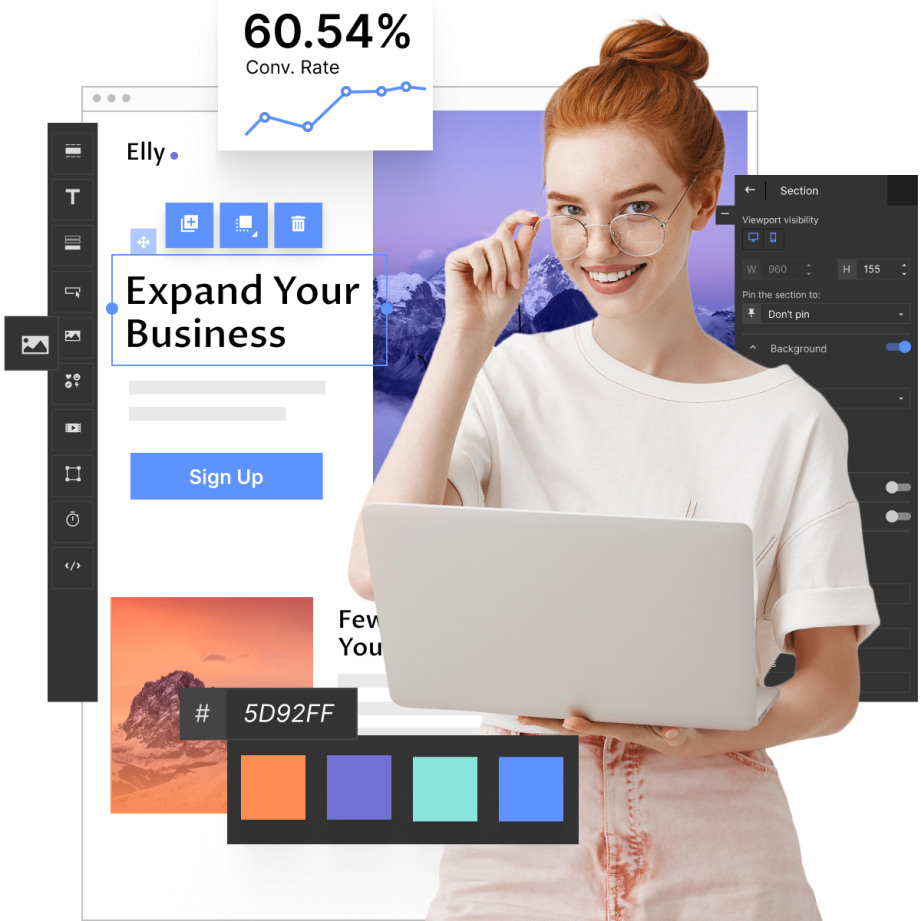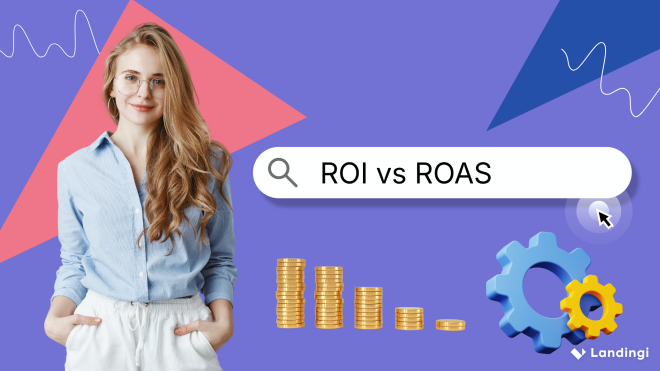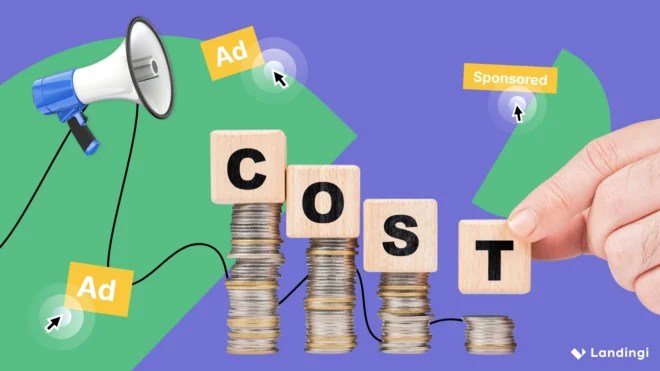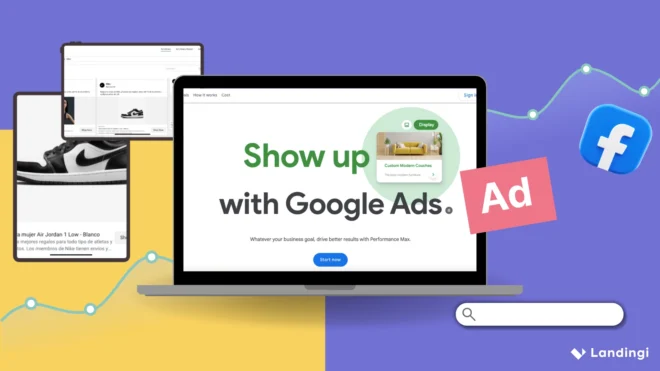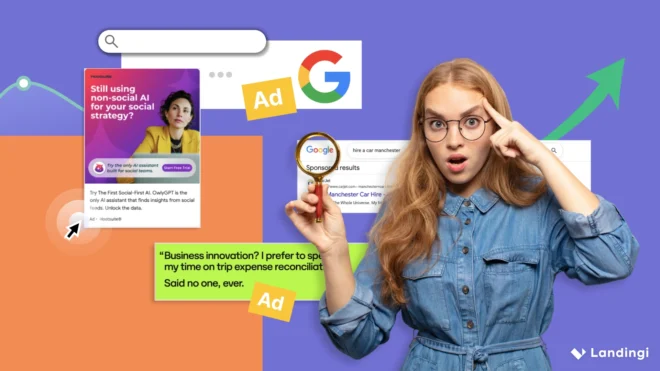In digital advertising, it’s not enough to know if your ads are getting clicks – you need to know if they’re making money. Both ROI and ROAS are essential metrics, but they tell you different things. ROAS (Return on Advertising Spend) shows how much revenue your ads generate for every dollar spent. ROI (Return on Investment) takes it further by calculating whether the whole campaign is profitable after all costs are included – like product, team, tools, and shipping.
Here’s the key difference between ROI and ROAS:
- ROAS uses a simple formula: revenue from ads ÷ ad spend × 100.
- ROI uses a broader formula: (revenue – total costs) ÷ total costs × 100.
So while ROAS focuses on ad efficiency, ROI focuses on true profitability.
In this guide, you’ll learn exactly how to calculate both, when to use each one, where marketers go wrong, and how landing pages play a key role in improving both metrics. Let’s break it all down.
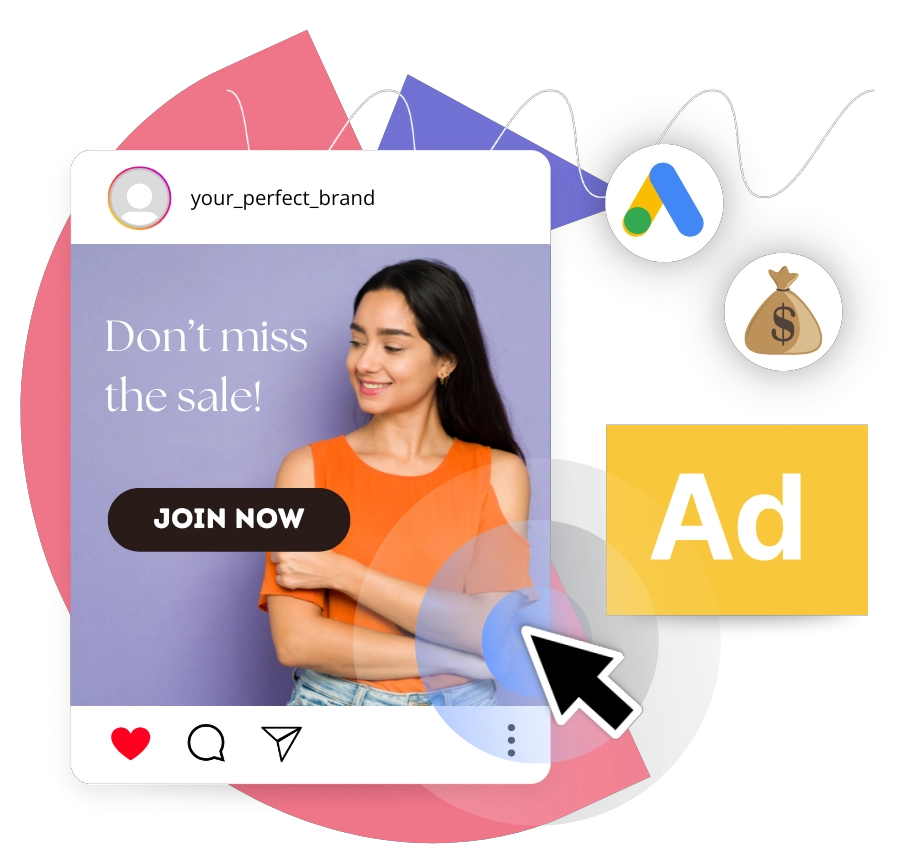
What is ROI?
ROI (“Return on Investment”) is a metric that shows how much profit your ad campaign makes compared to how much you spent. ROI is calculated by subtracting your ad costs from the revenue you earned, dividing that number by your costs, and multiplying by 100.
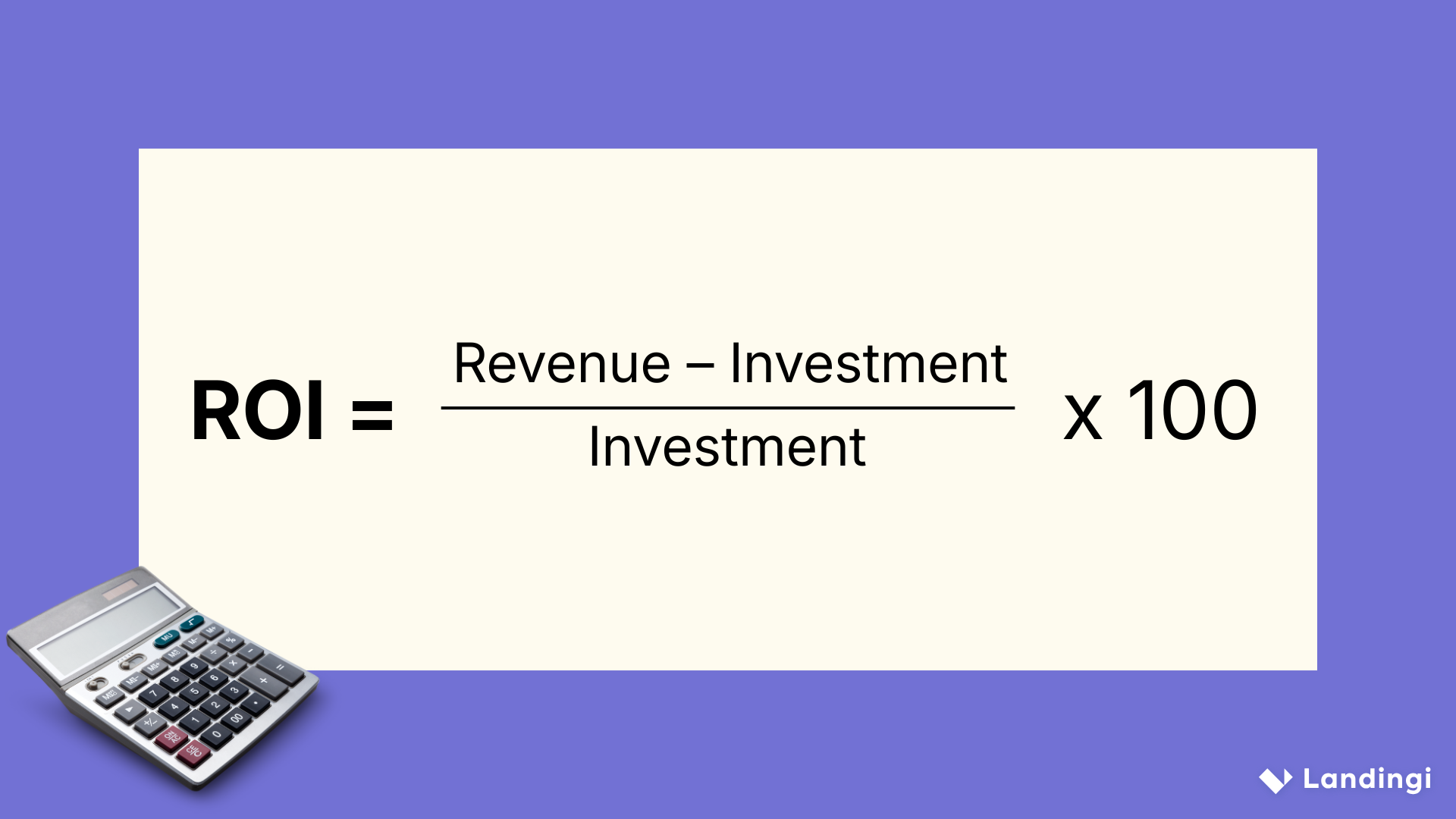
Say you spend $1,000 and earn $5,000 – your ROI is 400%. That means every dollar brought in four more. Whether you’re running Meta Ads or Google campaigns, ROI shows if your strategy is profitable or just expensive.
If you’re putting money into ads, ROI tells you if it’s actually paying off.
⭢ High ROI: great, you’re scaling smart.
⭢ Low ROI: you’re spending more than you’re earning.
What is ROAS?
ROAS (“Return on Ad Spend”) is a metric that shows how much revenue your ads generate for every dollar you spend on them. It is calculated by dividing the revenue from your ads by the cost of those ads, then multiplying by 100.
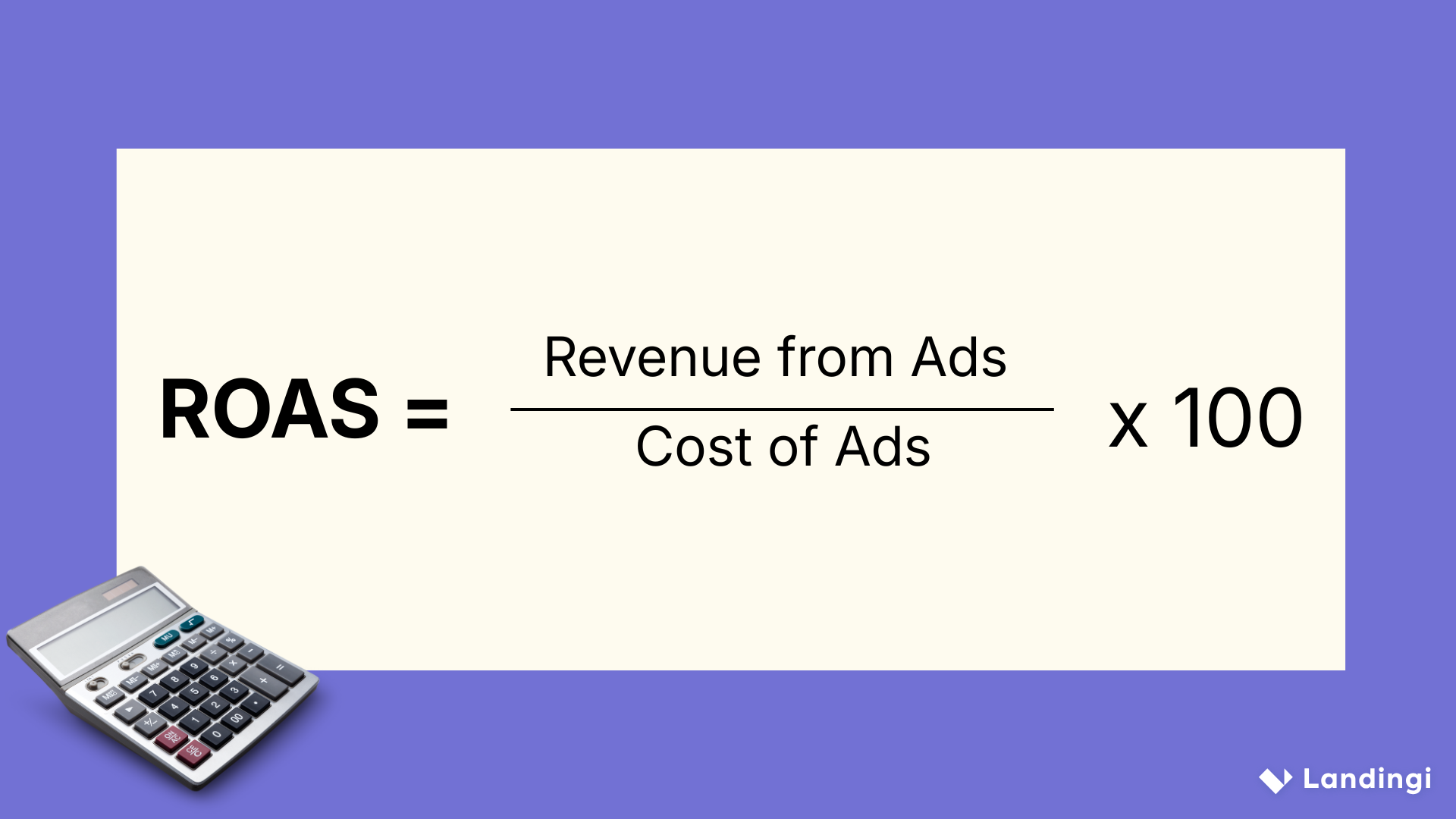
If you spend $1,000 and earn $4,000, your ROAS is 4:1—or 400%. That means you made $4 for every $1 spent on ads.
When Should Marketers Use ROI Instead of ROAS?
Marketers should use ROI when they want to see the full financial picture – not just how ads perform, but whether the entire marketing effort brings real profit.
ROAS only looks at ad spend and ad revenue. ROI goes further. It shows if your business is actually earning more than it spends across all marketing and operational costs. So if you’re running campaigns that include SEO, email marketing, blog content, or influencer partnerships (not just paid ads), ROI gives you a more accurate view. It includes everything: salaries, tools, production costs, shipping, and more.
Use ROI when:
- Your campaigns span multiple channels.
- You’ve got serious overhead (like manufacturing or staffing).
- You’re thinking long-term, not just this quarter.
- You need to prove value to stakeholders.
- You’re looking at customer lifetime value, not just one sale.
In short: ROAS is great for campaign tweaks. ROI is for big-picture decisions.
Boost your ROI! Design conversion-focused landing pages with Landingi today!
5 Key Differences between ROI and ROAS
The main difference is that ROI shows actual profit after all costs, while ROAS focuses only on revenue from ads. Here’s how they differ in practice:
1. What They Measure
ROI looks at the full business impact – it includes every dollar earned and every dollar spent, across the board.
ROAS focuses only on ad revenue versus ad spend. It won’t tell you if your campaign made money overall, just if the ads generated income.
2. Which Costs Are Counted
ROI includes everything: ad spend, product costs, shipping, software, salaries – any cost tied to the campaign or business activity.
ROAS is limited to the media budget. It ignores the rest, which means it can make a marketing campaign look profitable when it isn’t.
3. What They Tell You About Profit
ROI answers the big question: “Did this digital marketing campaign actually make money after all costs?”
ROAS answers: “Did the ads bring in revenue?” It’s useful – but incomplete. High ROAS doesn’t always mean high profit.
Example:
Company earns $100K, spends $25K on ads. ROAS = 400%.
But if other costs total $80K, ROI = –4.76%.
Big gross revenue, yes—but also a net loss. Only ROI shows that.
4. When and How They’re Used
Use ROAS for campaign-level decisions – comparing ad platforms, tweaking creatives, testing audiences.
Use ROI for high-level strategy – budgeting, reporting, or deciding which marketing channels deserve long-term investment.
5. How They Fit Into Your Timeline
ROAS is your go-to for short-term wins. It’s quick, focused, and great for real-time performance.
ROI is better suited to the long game. It helps track sustainable growth, especially when customer value builds over time.
ROI vs ROAS Examples
Let’s say you’re running a paid campaign for your ecommerce store. You’ve launched a promo for a new product line, invested in Meta Ads, and now you’re reviewing results. Two numbers pop up: ROAS and ROI. Both look impressive – but are they telling the same story?
Not quite. Here’s how they break down in real life.
ROI Example
Your campaign brings in $100,000 in revenue. You’ve spent $25,000 on ads to get there. But that’s not the full story. You also spent $80,000 on everything else: product manufacturing, your team, packaging, software tools, and shipping.
Now let’s do the math:
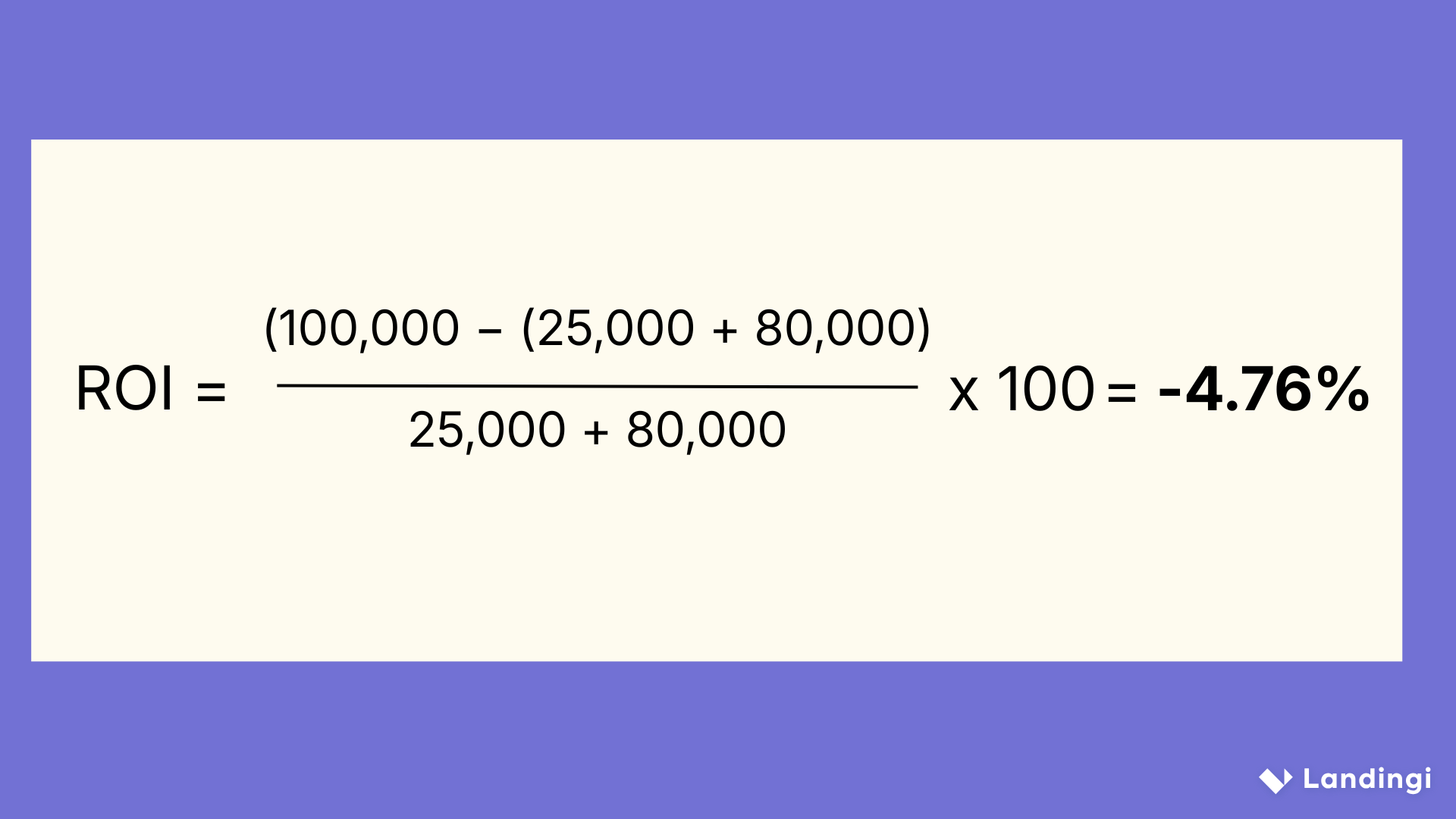
Despite strong revenue, your business ends up losing money. The total costs ($105,000) outweigh your earnings. Your ROI is negative, which means the campaign wasn’t profitable.
ROAS Example
Now let’s look at ROAS for that same campaign:
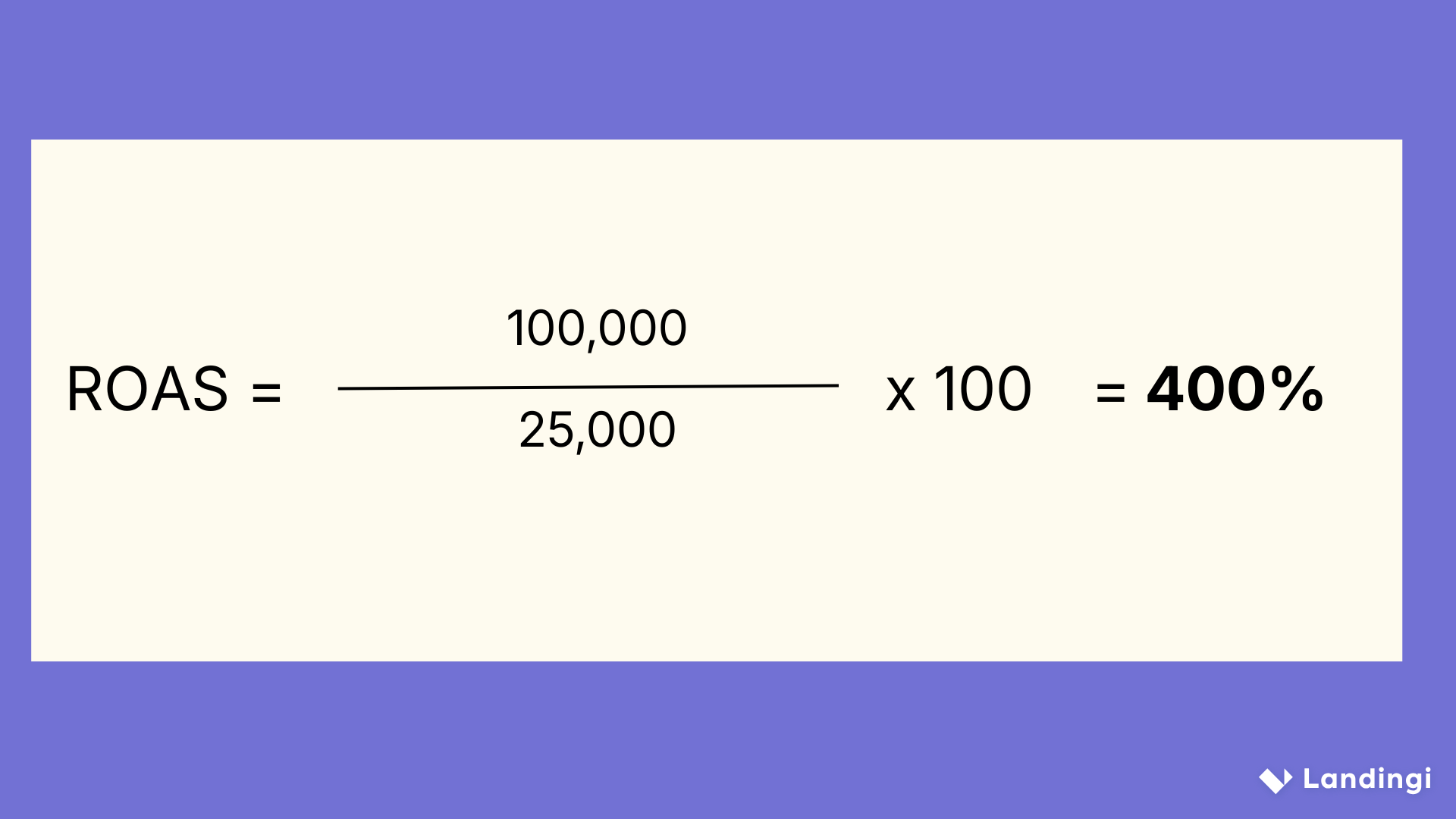
You made $4 in revenue for every $1 spent on ads. That sounds like a win – and from a pure advertising standpoint, it is. The ads did their job. But that number doesn’t reflect the bigger picture. ROAS ignores the other $80,000 in costs that ROI caught.
Takeaway: ROAS tells you your ads are performing. ROI tells you if the campaign is sustainable. You need both to make smart, data-driven decisions. Otherwise, you might end up scaling a campaign that looks efficient, but actually drains your budget.
FAQ about ROI and ROAS
Still not sure when to use ROI or ROAS? Here are quick answers to the most common questions marketers ask.
What is the Main Difference between ROI and ROAS?
ROI measures profit generated after all costs; ROAS measures revenue from ads only. ROI includes everything – ad spend, salaries, tools, production – so it shows if a digital advertising campaign is actually profitable. ROAS focuses just on how much revenue your ads bring in per dollar spent, without accounting for other marketing costs.
What is considered a Good ROI and ROAS Benchmark in e-commerce?
A good ROI in e-commerce ranges from 2x to 4.5x; a strong ROAS is typically 4:1 or higher. Benchmarks vary by industry, but anything below 2x ROI or under 3:1 ROAS signals it’s time to optimize.
How do Landing Pages Influence ROI and ROAS in Digital Advertising?
Landing pages directly affect ROI and ROAS by improving conversion rates, user experience, and message consistency. The better your landing page performs, the more return you get from the same ad spend.
A clear layout, fast load time, and mobile optimization reduce bounce rates and keep users engaged. Pages that match the ad’s promise—same tone, same offer—build trust and drive action. And when visitors convert more often, both your ROAS (revenue per ad dollar) and ROI (profit after all costs) go up. Marketers who A/B test landing page elements like headlines, CTAs, or forms consistently squeeze more value out of every campaign.
Make your ads work harder! Use Landingi to create pages that turn traffic into sales!
What’s the Best Way to Analyze Overall Campaign Performance?
The best way to analyze digital ad campaigns is to combine multiple key metrics with continuous, data-driven optimization.
No single number gives you the full story. To truly understand how a campaign performs, you need to track a mix of short-term and long-term metrics. Start with the essentials: CTR shows if your ad gets attention, conversion rate shows if it delivers results, ROAS shows revenue per ad dollar, and ROI shows actual profit after all costs. Add in CAC and CLTV to measure acquisition efficiency and long-term value.
But numbers alone aren’t enough.
Use attribution models to see which touchpoints actually drive conversions. Segment your data by audience, device, and channel to spot patterns. And compare your numbers to industry benchmarks to keep marketing performance in check.
Modern campaign analysis also relies on real-time data and AI-powered tools to tweak campaigns on the fly, adjusting bids, creatives, and targeting as needed. Pair that with A/B testing to keep improving landing pages and ad messages.
How can Improving Conversion Rates Increase ROI and ROAS?
Better conversion rates mean more sales from the same traffic and ad spend, which boosts both ROI and ROAS. When more visitors turn into customers, your cost per acquisition drops, revenue rises, and profit margins improve – all without increasing your budget. It’s one of the fastest ways to make every marketing dollar work harder.
What Tools Help Track ROI and ROAS Automatically?
Top tools for tracking ROI and ROAS include Voluum, HubSpot, and GA4 – each offering real-time performance data and attribution insights.
Platforms like Voluum and Madgicx give ad-specific ROAS and ROI reports across channels like Meta and Google. HubSpot and Ruler Analytics connect CRM and revenue data for full-funnel ROI tracking. Google Analytics 4 (GA4) remains a go-to for conversion and revenue insights. Together, these tools automate reporting, close data gaps, and help marketers make smarter, faster decisions.
What are the Common Mistakes Marketers Make When Analyzing ROI and ROAS?
Marketers often misread ROI and ROAS by ignoring key costs, relying on shallow attribution, or mistaking efficiency for profitability.
One major mistake is calculating ROAS without including hidden advertising expenses, like creative production, tools, or staff, resulting in inflated numbers. Another is confusing ROAS with ROI: a campaign can show strong ROAS from paid ads but still generate negative ROI once full costs are factored in. Many also lean too heavily on last-click attribution, undervaluing top-of-funnel advertising efforts that drive awareness and future conversions. Others forget to factor in refunds, overlook customer lifetime value, or chase vanity metrics like clicks instead of tracking real outcomes like conversions and net profit. These blind spots can lead to poor marketing investment decisions and missed opportunities.
Use Landingi to create landing pages that drive real results from your ads
Dive Into Digital Advertising with Landingi
Improving your Return on Investment and Return on Advertising Spend starts with understanding how they work. The ROAS formula tells you how efficiently your ads turn spend into revenue. The ROI formula reveals whether your campaigns are truly profitable after all costs. And the real power comes when you use both together.
Knowing the difference between ROI and ROAS helps you spot what’s really working—and stop wasting budget where it’s not. But metrics alone won’t move the needle.
What connects them? Your landing page.
It’s the final step in the funnel – and the one that most directly impacts both ROI and ROAS. A fast, relevant, conversion-focused landing page turns more clicks into customers, lowering acquisition costs and driving more revenue from the same ad spend.
At Landingi, we make it easy to build landing pages that convert—fast, without coding, and fully aligned with your campaigns. Boost your Return on Investment, improve your Return on Ad Spend, and make every visit count. Start for free and turn more traffic into real returns.
